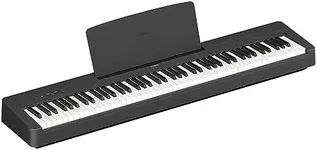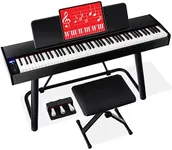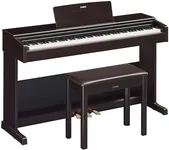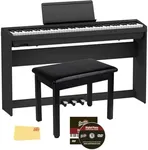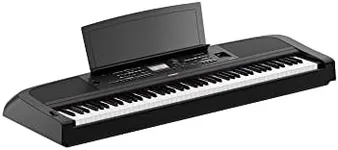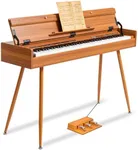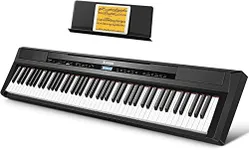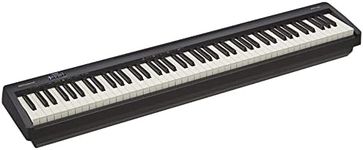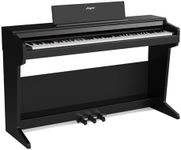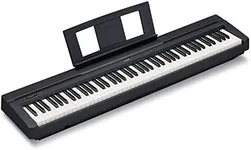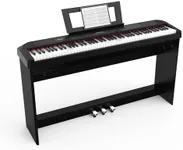Buying Guide for the Best Weighted Piano Keyboard
Choosing the right weighted piano keyboard can significantly enhance your playing experience, whether you're a beginner or an experienced pianist. Weighted keys mimic the feel of an acoustic piano, providing a more authentic touch and response. When selecting a weighted piano keyboard, it's important to consider several key specifications to ensure you find the best fit for your needs and playing style.Key WeightingKey weighting refers to the resistance you feel when pressing down on the keys. This is important because it affects the touch and feel of the keyboard, making it more similar to an acoustic piano. Key weighting can be fully weighted, semi-weighted, or unweighted. Fully weighted keys provide the most resistance and are ideal for classical and serious piano players who want an authentic piano feel. Semi-weighted keys offer some resistance but are lighter, making them suitable for beginners or those who play a variety of music styles. Unweighted keys are the lightest and are often found on synthesizers and entry-level keyboards.
Number of KeysThe number of keys on a keyboard determines the range of notes you can play. This is important because it affects the types of music you can perform. Keyboards typically come with 61, 76, or 88 keys. An 88-key keyboard is the standard for classical and advanced piano pieces, providing the full range of an acoustic piano. A 76-key keyboard offers a slightly reduced range but is more portable and still suitable for most music styles. A 61-key keyboard is the most compact and portable, ideal for beginners or those with limited space, but it may not be suitable for more complex pieces.
Touch SensitivityTouch sensitivity refers to how the keyboard responds to the force with which you press the keys. This is important because it allows for dynamic playing, where the volume and tone change based on your touch. Keyboards can have no touch sensitivity, single touch sensitivity, or graded touch sensitivity. No touch sensitivity means the volume is the same regardless of how hard you press. Single touch sensitivity allows for some dynamic control, while graded touch sensitivity mimics the feel of an acoustic piano, with heavier touch in the lower keys and lighter touch in the higher keys. For a more expressive and realistic playing experience, graded touch sensitivity is ideal.
PolyphonyPolyphony refers to the number of notes a keyboard can produce at the same time. This is important for playing complex pieces and using the sustain pedal. Keyboards can have polyphony ranging from 32 to 256 notes. A higher polyphony count allows for more notes to be played simultaneously without cutting off previous notes, which is crucial for advanced pieces and layering sounds. For beginners, 32 to 64-note polyphony may be sufficient, but intermediate and advanced players should look for at least 128-note polyphony to ensure smooth and uninterrupted performance.
Sound QualitySound quality is determined by the samples and technology used to produce the piano sounds. This is important because it affects the overall playing experience and how realistic the keyboard sounds. High-quality sound samples and advanced sound engines provide a more authentic and rich piano sound. When evaluating sound quality, listen for clarity, resonance, and the natural decay of notes. For a more realistic experience, look for keyboards with high-quality samples from renowned acoustic pianos and advanced sound processing technology.
PortabilityPortability refers to the ease with which you can transport the keyboard. This is important if you need to move the keyboard frequently or have limited space. Portability is influenced by the keyboard's weight, size, and whether it has built-in speakers. Lighter and more compact keyboards are easier to transport and store, making them ideal for gigging musicians or those with limited space. However, more portable keyboards may sacrifice some features and sound quality. Consider your need for mobility versus the features you require when choosing the right balance for you.
